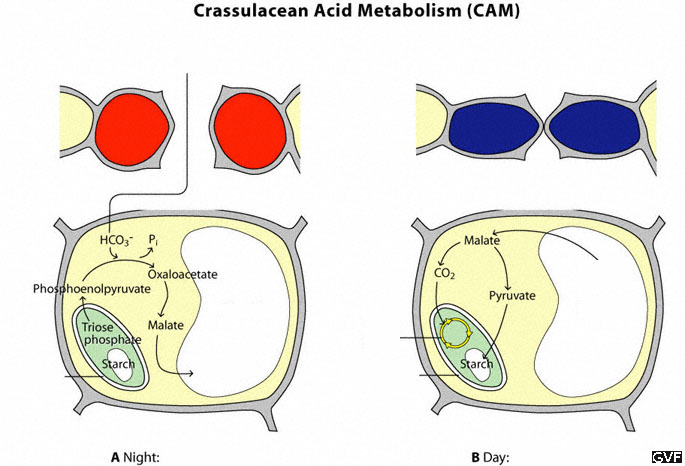Back to Medium sized version | With labels
Principle of Crassulacean Acid Metabolism (CAM; Day versus Night)

English name:
Scientific name:
Familia:
Classis:
Phylum: Angiospermae
Regnum: Plantae
Photosynthesis takes prepoundarily place in the leaves and requires light energy, carbon dioxide from the atmosphere as a source of carbon and water taken up by the roots.The so-called Crassulacean Acid Malate metabolism or CAM metabolism is an adapted photosynthetic pathway that has evolved as an adaptation to arid regions. To prevent excessive water loss due to evaporation during the hot and dry day time, the stomata of CAM plants remain closed during that period. Since the absorption of carbon dioxide (CO2) is obligatory for photosynthesis, but only possible with open stomata, the plant opens its stomata only at night, when the temperature decreases and humidity rises. Carbon from CO2 is stored as malate in the large vacuoles, and released during day when there is plenty of light to perform the light reactions of photosynthesis. As the name suggests, CAM metabolism was discovered in Crassulacean plants (example: jade plant), but it appears to occur also in other dicots and in a number of monocots (examples: pineapple and Sanseveria).







